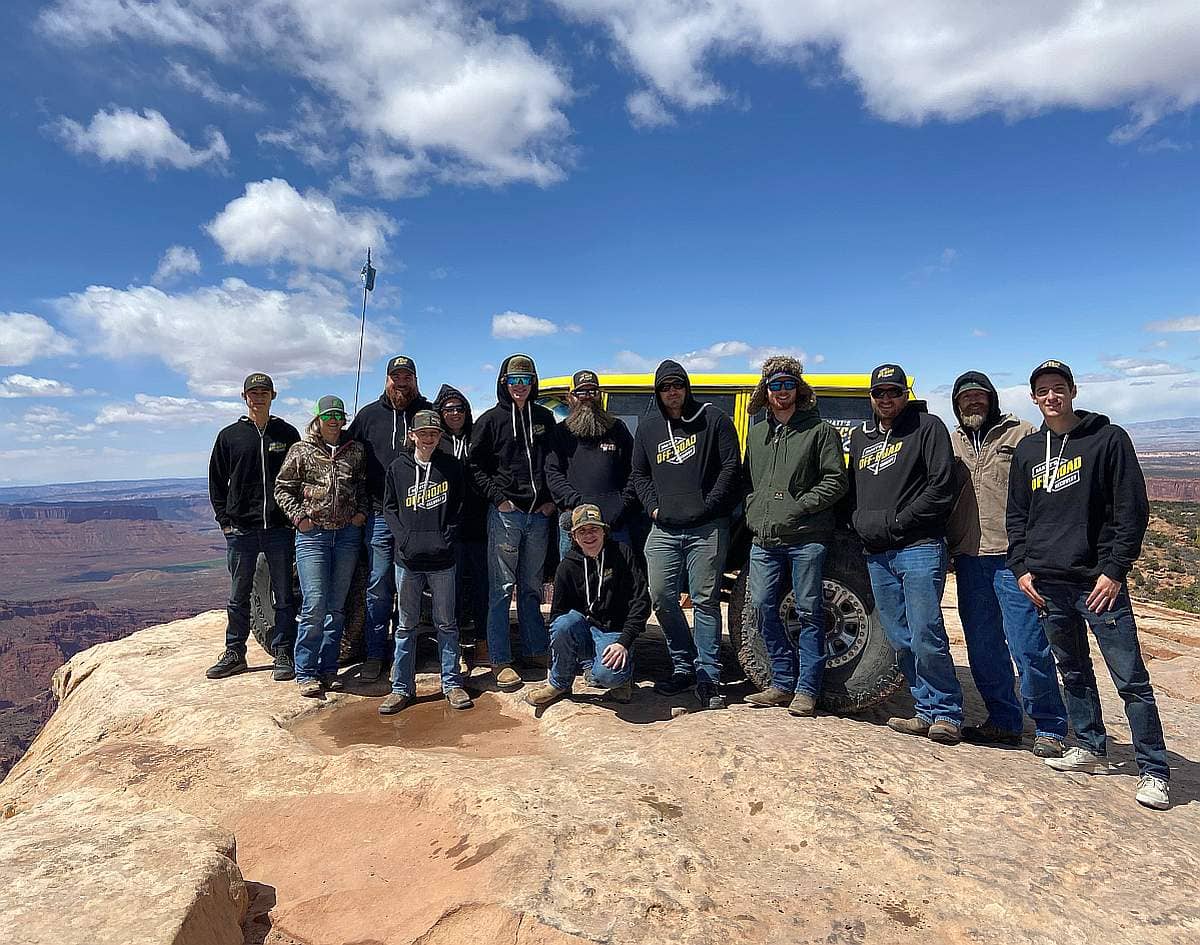
Matt’s Off-Road Recovery: A Southern Utah Tow Truck Driver’s Journey to YouTube Stardom
By Elainna Ciaramella
In just three and a half years since the YouTube channel started in 2019, Matt’s Off-Road Recovery has become a national sensation with nearly 1.5 million subscribers and growing. What makes this YouTube success story intriguing is the channel’s atypical creator, Matt Wetzel, a rugged, big-bearded, technology-impaired, middle-aged tow truck driver from Hurricane, Utah. With pure grit, Matt managed to build a wildly popular YouTube channel from the ground up with just an iPhone.
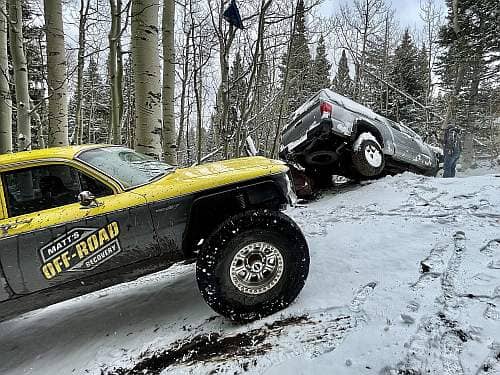 Matt’s Off-Road Recovery is a family-friendly, edge-of-your-seat YouTube channel based on the real-life adventures and bare-knuckle recoveries of Matt and his crew: his wife, Jaymie, their four sons, and a gentleman named Ed. They are joined by a growing crew of capable and likable characters, and three dogs, who are all rescues—Lady and Peanut, both Border Collies, and Max, a chocolate Labrador—possibly the happiest dogs in the world, given the stunning natural landscapes where they run.
Matt’s Off-Road Recovery is a family-friendly, edge-of-your-seat YouTube channel based on the real-life adventures and bare-knuckle recoveries of Matt and his crew: his wife, Jaymie, their four sons, and a gentleman named Ed. They are joined by a growing crew of capable and likable characters, and three dogs, who are all rescues—Lady and Peanut, both Border Collies, and Max, a chocolate Labrador—possibly the happiest dogs in the world, given the stunning natural landscapes where they run.
The channel brings viewers along for the ride on a variety of off-road recoveries of automobiles, and UTVs, etc., mostly rentals driven by helpless tourists who are unfamiliar both of the terrain and the off-road capabilities of their vehicles. The videos are a slice-of-life showing how Matt and his crew cope with often difficult recoveries in remote corners of some of Utah's most scenic landscapes, including Zion National Park, Sand Hollow State Park, and other parts of southern Utah. On rare occasions Matt and his crew will venture north for recoveries in the mountains of northern Utah, but most of the action happens within a 200 mile radius of Hurricane.
The videos follow a three-part formula: the "So-I-got-a-call" incoming telephone plea of a stranded motorist indicating the location and situation of the stuck vehicle, the fast-motion journey to the location (accompanied by music and the dogs running alongside the recovery vehicles), and finally the diagnosis and rescue, which is often dramatic. Stranded motorists are always treated with kindness and respect, regardless of their lapses in judgment or inappropriateness of their vehicle for a given situation. Matt and his crew delight in problem-solving the most extreme rescues in often ludicrous and seemingly hopeless situations, usually requiring much creativity and improvising.
How it all began
Before he was a famous YouTuber, Matt spent 12 years in the roofing business—10 years as an employee and the last two years as a business owner. Matt and Adam Stout started Skyline Roofing, a successful roofing company that is still based in Hurricane, Utah. After two years, Matt sold his interest in Skyline, bought the assets of a local towing company, and started Red Ryder Towing.
Before Red Ryder, Matt had not towed professionally, but between roofing and farming and everything else, he towed a lot of heavy loads. “There is a side of towing that is problem solving and understanding what equipment can and can’t do, and what you should and shouldn’t do with it,” says Matt. “I stepped into the towing industry going full speed.”
Not long after Matt started Red Ryder Towing, he purchased Winder Towing. “I looked at it like I could spend my life building this towing company or I could buy one that’s already built. So in 2013, I bought Winder Towing.”
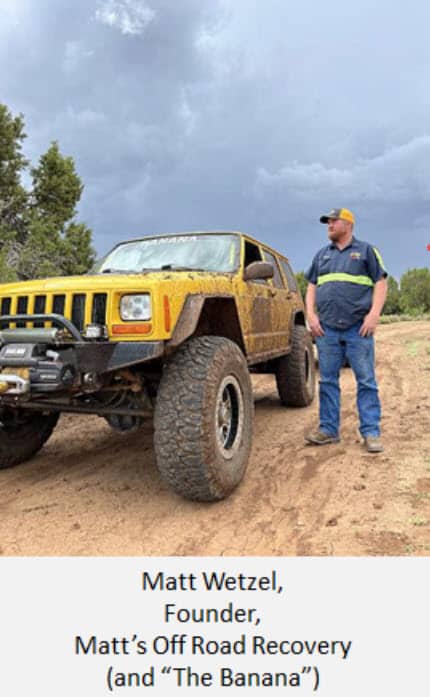 In 2009, they started getting calls for off-road tow jobs, but Matt didn’t have the right equipment. “We just started doing them anyway, and we didn’t do super good and we knew it was all wrong,” says Matt. Calls would come in and Matt knew the system was wasn't working. For instance, it might be August, 110 degrees, and a couple of college kids would drive their car out to the beach at Sand Hollow and get stuck.
In 2009, they started getting calls for off-road tow jobs, but Matt didn’t have the right equipment. “We just started doing them anyway, and we didn’t do super good and we knew it was all wrong,” says Matt. Calls would come in and Matt knew the system was wasn't working. For instance, it might be August, 110 degrees, and a couple of college kids would drive their car out to the beach at Sand Hollow and get stuck.
“I’d come out there with a wrecker and cable extensions. You're asking your employee to drag 150 feet of cable out, walk back through the sand, pick up 100 feet of cable extension, go back, drag it all the way, hook it up, come back, and get another one and go out there. Well they're in trouble at that point, like heat exhaustion."
He continues, “It would take me two, three, or four guys to drag the cable to that car, hook it up, and now it's the same process over again. We can only pull in 150 feet, and then we have to pull that cable back out and hook to the next one, pull this cable up and pull them again. By the time it's done, you've got a $1,200 dollar or $1,500 dollar job for some college kids that just barely had enough money to pay the fee to get through the gate."
“In some cases, the tow bill is looking like it's going to total the car that we're pulling out. It's not a very nice car. I knew the whole thing was wrong and I would discount like crazy. And even if I discounted it down to $400 or $500 bucks, it was devastating to them. Also I've got these expensive trucks that I'm pulling through the sand and I'm pulling them out there too far, and then I have to self-rescue and all this stuff, so it just wasn't working.”
Matt decided modifying the tow rigs for off-road recovery was not the right decision. He needed to start with a clean slate. He chose a 2001 Jeep Cherokee (XJ), which he built up and painted yellow. The yellow paint is what led to the Cherokee being derisively nicknamed “The Banana'' by a doubtful customer a few moments before the modified Cherokee yanked his class C motorhome out of the sand (the customer is a firm believer now).
Matt incorporates kinetic energy ropes, which he calls “a fantastic tool.” The Banana or the more recent Morvair, (a highly modified Corvair), combined with kinetic ropes make it possible for Matt and his crew to dramatically reduce the time and prices of recoveries. “These jobs are getting done now in literally minutes instead of hours,” says Matt.
Personal podcasts to friends
As Matt’s off-road recoveries became the norm, he began to share nightly personal podcasts to some long-time friends. “One of them is an airline pilot and the other is a nuclear engineer. They have jobs where they sit and do boring stuff. They’re living through my stories and they’re like, ‘You should write a book, send me pictures.’”
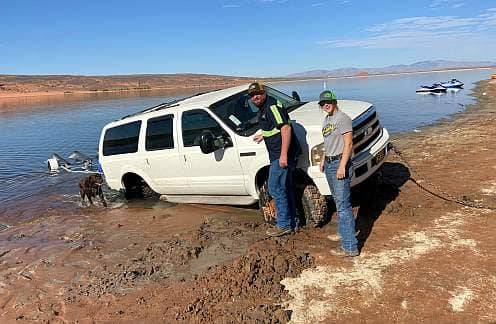 To satisfy friends living vicariously through his often ridiculous extractions, Matt started taking more pictures and short videos which he sent to his buddies. “I’m doing all of this work for two people to just show them interesting stories of what we’re doing." Friends and family suggested he look into posting the videos on YouTube. “They said, ‘You can make it worth your time—some people are doing this for a living.’”
To satisfy friends living vicariously through his often ridiculous extractions, Matt started taking more pictures and short videos which he sent to his buddies. “I’m doing all of this work for two people to just show them interesting stories of what we’re doing." Friends and family suggested he look into posting the videos on YouTube. “They said, ‘You can make it worth your time—some people are doing this for a living.’”
However, Matt wasn’t great at technology. “I can’t run a laptop" says Matt. "I’m technologically impaired that way. I love problem solving, but for some reason, I don't like computer problems.” Matt looked into YouTube. He knew people who would make family vlogs and post them to YouTube because it costs nothing.
During Matt’s initial YouTube research, he saw how people turned their YouTube channels into multi-million dollar businesses, "because their videos were good and people wanted to see them,” says Matt.
Matt’s brother-in-law helped him start a YouTube channel but it didn’t go anywhere. “I think there are two videos on it," says Matt. "It was a lot of work. I realized somewhere between 2016 and 2017 that this was a really long process...I was so far away from it on the videography and editing side. Then, I thought about how there are 10 billion YouTubers and almost none of them are successful. What are they doing, and what are the successful ones doing that’s making them quit their jobs and do this full time?”
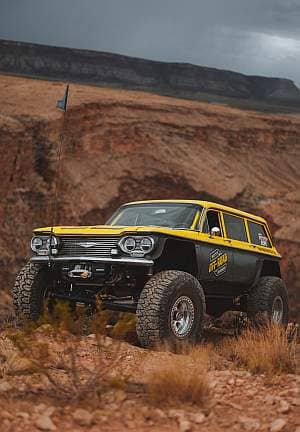 Matt didn’t know the right questions to ask. “It was a really long process, but I’ve had the ability to hyper focus for years, so I hyper focused on YouTube and learning how to do it.”
Matt didn’t know the right questions to ask. “It was a really long process, but I’ve had the ability to hyper focus for years, so I hyper focused on YouTube and learning how to do it.”
Matt discovered LumaFusion, a mobile app that allowed him to edit on his phone because he didn’t like using a desktop. He figured, “Okay, if I can run this off my iPhone, I can do this.”
Matt learned how to YouTube from YouTube. "There are YouTubers like Nick Nimmin who are all about how to start YouTube channels, how to do the right things and not do the wrong things," says Matt. “Everybody’s natural tendency is to do the wrong thing on YouTube. One of those things is, ‘Please subscribe and share.’ Never do that—that’s annoying.”
Now Matt meets real YouTubers and people in the industry who tell him they use him as an example of someone who think they could start YouTubing until they have hundreds of thousands of dollars of camera equipment, a studio, etc. “They say, “Hey, this high-school-educated tow truck driver started a YouTube channel with an iPhone,” which is exactly what Matt did. He focused on the equipment on hand and started filming and editing his own stories.
24-hour towing and editing all night
At this point, Matt was road towing with tow trucks and doing off-road recovery. Everything was filmed on his iPhone. “I’m filming myself with it. I’m filming a lot of what’s going on out there,” he says. “When we get to the job, I hand the phone to Ed or one of my kids or my wife or somebody. If not, I’m propping it up with sticks and rocks.”
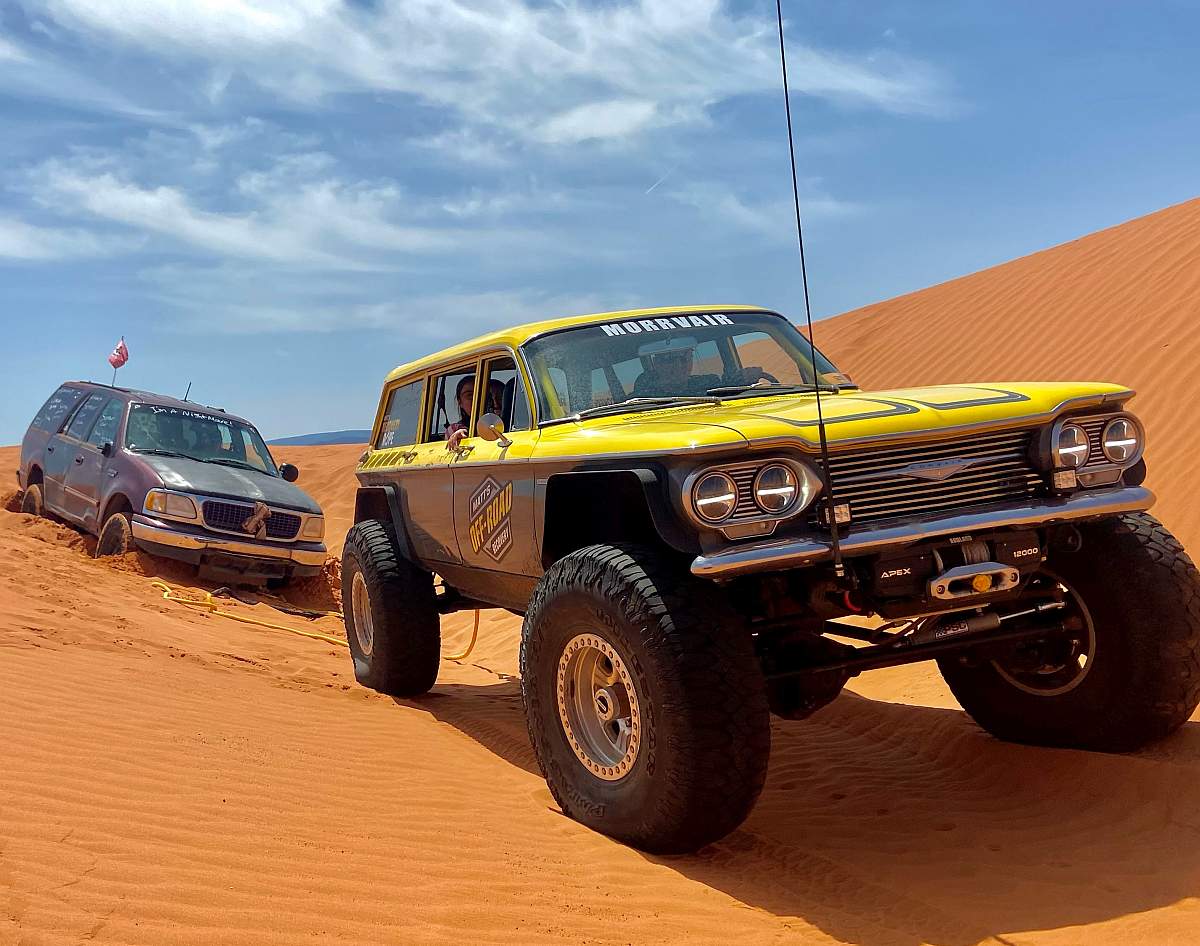 During the early years Matt was running a 24-hour towing company which dominated most of his time. When everybody went to bed around 10 p.m., he would lock himself in his attic and edit videos, dropping two to three videos a week, and getting about two to three hours’ sleep a night. “I’d catch cat naps wherever I could, but I lived that way for a little over a year and a half,” he recalls.
During the early years Matt was running a 24-hour towing company which dominated most of his time. When everybody went to bed around 10 p.m., he would lock himself in his attic and edit videos, dropping two to three videos a week, and getting about two to three hours’ sleep a night. “I’d catch cat naps wherever I could, but I lived that way for a little over a year and a half,” he recalls.
Within six to eight months, Matt had a video that went viral. “At this point, we were getting some videos that were fairly viral, videos with over a million views. You know, when you first start out, your videos are getting a couple thousand views, but ours started growing really fast, and getting 10,000 views on every video, then 20,000, and now we've got this video that hit a million views. We had a couple of good videos in a row.”
Matt started asking himself more pointed questions. Instead of, “What makes a good video or what makes a bad video?” he asked, “Why did this video perform, and why did this one not perform?”
Meeting Derral Eves
Matt felt he had to launch his channel right because he found out that you can run a pretty bad YouTube channel or a pretty good one—they both take about the same amount of work. “I wanted it. I knew I could make it into a business and monetize it.”
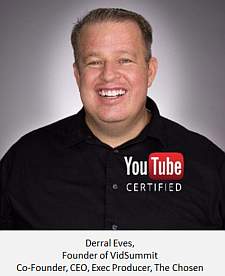 In the middle of everything, Matt kept hearing the name, Derral Eves, and how he founded VidSummit. People would say to Matt, “He lives right in your town,” and Matt would respond, “Who is this guy?” and they’d say, “Oh you know, he’s tied in with MrBeast,” and every other successful YouTuber Matt could think of.
In the middle of everything, Matt kept hearing the name, Derral Eves, and how he founded VidSummit. People would say to Matt, “He lives right in your town,” and Matt would respond, “Who is this guy?” and they’d say, “Oh you know, he’s tied in with MrBeast,” and every other successful YouTuber Matt could think of.
Matt got Derral’s number from a friend and was surprised when Derral answered the phone, especially a number he didn’t know. Matt gives his account after Derral took his call: “Hey, I got this little YouTube channel. I feel like it's doing pretty good, but I feel like I'm at a dead-end. I don't know how to make it better. Do you do any consulting? I would like to hire you.”
Derral replied: “No, we don't do one-on-one, but I've got this class coming up that you can take. It's $5,000.” To Matt this sounded like a ridiculous amount of money.
Matt was thinking he hit another dead-end. He was about to hang up the phone and Derral asked, “Wait, what's the name of your channel? If I get a minute, maybe I'll look at it.” Matt told him it’s Matt’s Off-Road Recovery, and hung up. 20 minutes later Matt received a text from Derral: Hey, we need to go to lunch.
When they met Derral shared with Matt what he liked about Matt's channel: the tenacity and hardwork of Matt and his team.
Derral asked, “Who’s doing your editing?” Matt replied, “I’m doing it.” Derral responded, “Holy smokes...we’ve got to stop that. We’ve got to get you an editor because you should be out creating content. Your editor should be editing and putting it up.” Derral put it on the line: “If you’re serious and you really want to do this, and you want a partner who can help you, we can partner.” The pair ended up coming to a deal.
“You have to understand the chaos that was going on before this because I didn’t know anything about computers,” recalls Matt. “We were losing footage. Audio didn't always work. It was just chaos.” Matt took Derral's Channel Jumpstart class that teaches users how to YouTube and create content people want to watch. Matt said he loves YouTube because he sees it as a puzzle.
"If you can’t keep the audience’s attention, they’ll move on. Everybody’s looking for the least boring thing to watch. They don’t care how much effort you’re putting into it or how artistic it is. They just want to know: does it make them feel better? Is it engaging? Can they identify with it so that the time they spent watching it is worthwhile? I really love that aspect of YouTube,” says Matt.
Capitalizing on YouTube and Merchandise
YouTube pays Matt's Off-road Recovery with Google's AdSense. The company also has sponsorships, affiliate partnerships, and merchandise. “We've messed with some global markets,” says Matt. “I have my own signature series of kinetic energy ropes. Every year, we crush the global nylon kinetic rope market. We have a walk-in store at our junkyard. Walk-in sales there are bigger than my towing company by far.”
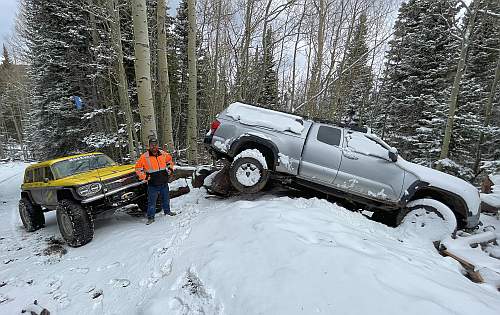 Today filming is done by company employees (the characters in the videos), but Matt still films occasionally. “If I’m vlogging, the audience seems to really like it,” says Matt. “From there, we upload the video footage to Google Drive where it is assigned to one of our four editors.”
Today filming is done by company employees (the characters in the videos), but Matt still films occasionally. “If I’m vlogging, the audience seems to really like it,” says Matt. “From there, we upload the video footage to Google Drive where it is assigned to one of our four editors.”
Matt hasn’t been editing since he partnered with Derral. It still takes some of his time because he'll still watch videos in the editing process and say, “Now take this out and put this in.”
What’s next for Matt’s YouTube Channel? Not surprisingly, Matt has been approached by scouts for the Discovery Channel and the History Channel, but he continues to deny them because he wants to maintain creative control.
“I think going the direction we’re going, but managing it better is the correct way to go,” says Matt. Additionally, Matt and his team are considering putting their content in a more customized platform, similar to Patreon, where viewers pay to access content that connects them on a more personal level.
Paying it forward
Matt has a big heart. “The biggest pain that Jaymie has about me is I’d rather do jobs for free,” says Matt. "During our entire marriage she'll ask me, “Did you collect on that?” and sometimes I'll mumble in a low voice, “Well, no.” Helping others is extremely important to Matt.
To date, Matt’s Off-Road Recovery’s YouTube family has raised over $600,000 dollars in charitable donations for local organizations like the Hurricane Valley Food Pantry, Tan’s Treats, Shop with a Cop, and an all-abilities park in Hurricane, as well as fundraisers for off-road recovery groups that improve and protect public land for wheeling and other off-road recovery activities.
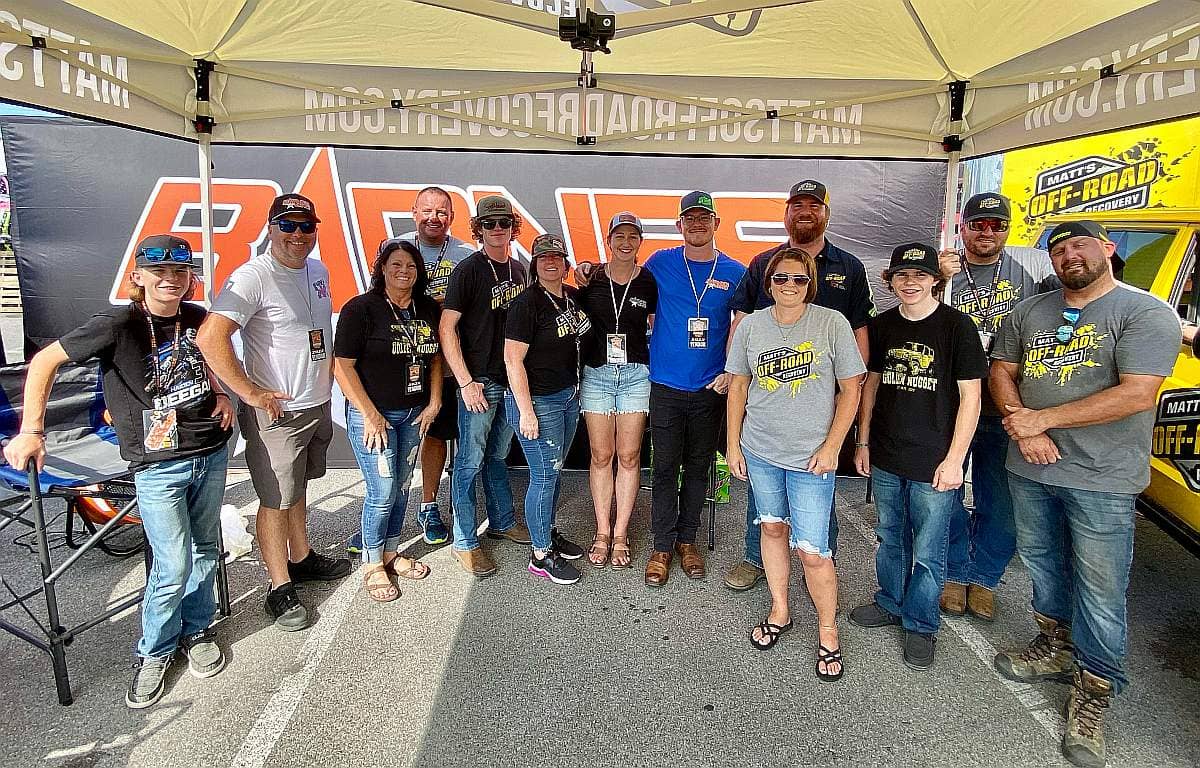
 Elainna Ciaramella is a business journalist and writer who lives in St. George. Elainna interviews business owners, researchers, university leaders, and c-suite executives from all over the country. Her curiosity is endless and she is constantly seeking information that will intrigue and inspire readers.
Elainna Ciaramella is a business journalist and writer who lives in St. George. Elainna interviews business owners, researchers, university leaders, and c-suite executives from all over the country. Her curiosity is endless and she is constantly seeking information that will intrigue and inspire readers.









